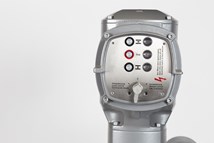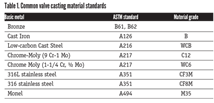No Sign of a Rollback in Global Steel Prices
Don’t look for steel prices to drop anytime soon.
#VMAnews
The way most valve manufacturers and foundries deal with the increases is by passing them on, usually with surcharges.
, which casts valves, is applying surcharges to steel scrap and alloys almost monthly. “We used to adjust surcharges once a quarter,” says Al Kinnard, vice president of the Richmond, TX, company. “Now it’s every month.”
Kinnard says surcharges on carbon steel average 10-15% of the cost of a casting, and are higher for stainless steel and other specialty grades. He doesn’t believe they are affecting business, but says customers increasingly want to know when they’re coming.
Valve manufacturers and casting companies have been dealing with rising prices for about three years, a process that has accelerated markedly since mid-2007.
“Five months ago we were paying somewhere in the neighborhood of C$350-360 per ton for charged scrap material,” says Kim Morgan, vice president of sales and marketing at , Surrey, British Columbia. “Now it’s up to C$650-660 per ton.”
Charged scrap is a casting feed material.
Morgan says it’s difficult to tell if any projects have been postponed because of the increases. He notes, however, that big projects use thousands of tons of steel plate and bar, and cost obviously “becomes a factor.”
There’s little any company can do to offset the increases. It might be possible to sign delivery contracts in advance of a hike, but there are no mechanisms like hedging to control prices. Timing is key, Morgan and Kinnard say.
“We only move forward when our customers move forward,” Morgan advises. “We have to be flexible and able to move quickly to secure material and protect our customers.”
Many factors affect steel prices. They include:
- High energy and materials costs. Steelmakers are passing on increases in iron ore, coke, steel scrap, natural gas and transportation. From January 2007 to March 2008, the U.S. price of scrap shot up about 86% to around $510 per metric ton, according to the web site . In May, Platts reported that cold-rolled coil increased $45 to $985 per ton, as buyers rushed to close deals ahead of anticipated hikes. Other grades are selling on the June spot market for almost $1,200 per ton.
- Inventory shortages. Steel service centers have reduced inventories. In February, inventories were 62,000 tons less than at the end of 2007, reports , and supply at the end of January was 2.7 months compared to 3.5 months a year earlier. U.S. steelmakers are increasing output, but low inventories and a drop in imports probably mean prices will hold.
- Rising global consumption. China, India, South Korea and the Middle East have major infrastructure projects underway that are raising demand for steel.
When China sneezes... China’s steelmakers, which produce around 35% of world supply, are negotiating contract prices for iron ore from Australia. Two exporters, Rio Tinto and BHP Billiton, want increases exceeding the 65% that Brazil’s largest iron ore exporter received from Asian mills this year. A decision is expected by the end of June. China also reports there will be no price caps on steel used in local rebuilding projects after the devastating earthquake in May. Rising demand and prices in China could affect exports and supply.
Pat Toensmeier, a freelance writer based in Hamden, CT, contributes regularly to Valve Magazine. Reach him at toensmeier@sbcglobal.net.
RELATED CONTENT
-
Solenoid Valves: Direct Acting vs. Pilot-Operated
While presenting in a recent VMA Valve Basics 101 Course in Houston, I found myself in a familiar role: explaining solenoid valves (SOVs) to attendees. (I work with solenoids so much that one VMA member at that conference joked that I needed to be wearing an I Heart Solenoids t-shirt). During the hands-on “petting zoo” portion of the program, which involves smaller groups of attendees, one of the most frequently asked questions I get from people came up: What’s the difference between direct-acting and pilot-operated SOVs, and how do we make a choice?
-
Check Valves: The Most Important Valves in Your Process System
Check valves, as critical as they are for flow system performance, often don’t receive the respect they are due, said Arie Bregman, vice president and general manager, DFT, Inc., in a recent VMA presentation.
-
New Valve Stem Packing Design Makes Reducing Fugitive Emissions Easier
Fugitive emissions commonly occur in the plant environment through equipment leaks, flaring, evaporation and spills.







 Unloading large gate valve.jpg;maxWidth=214)